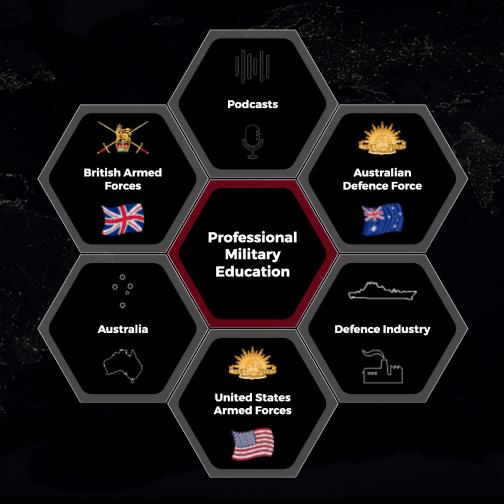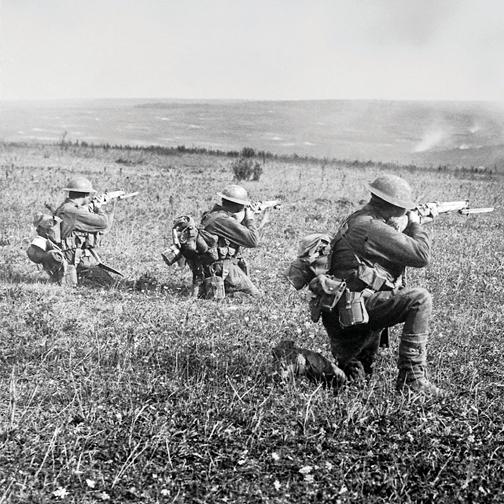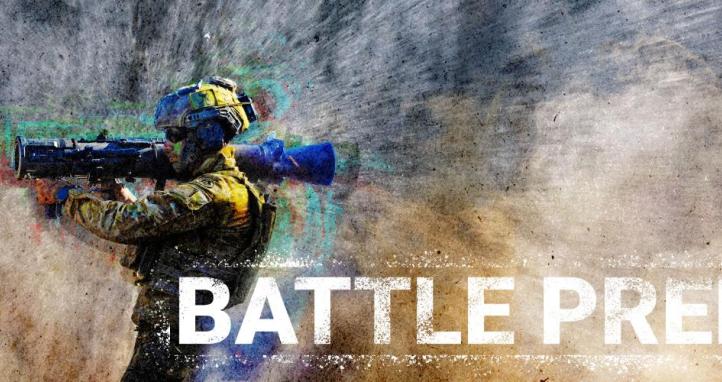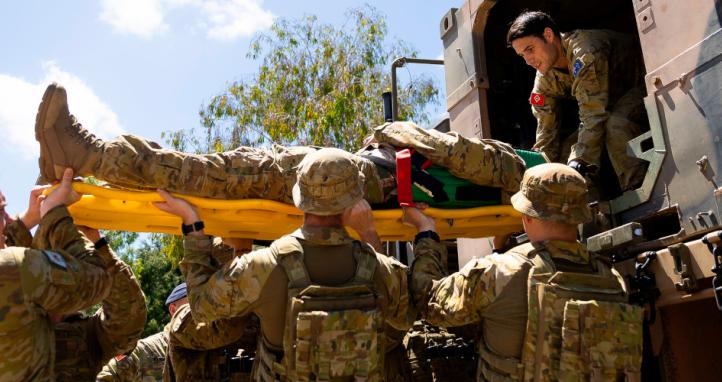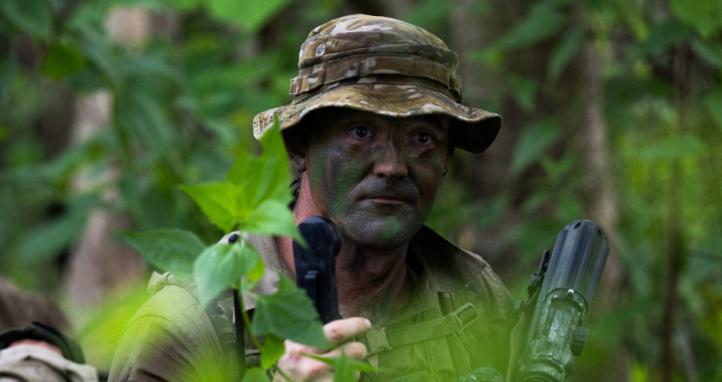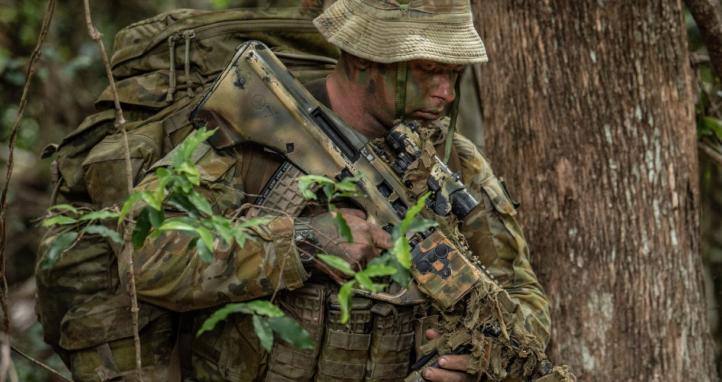Reconnaissance Strike Tactics (RST) for Distributed Operations in Australia’s Primary Area of Military Interest (Part 1)
The National Defence Strategy (NDS) establishes a multi-domain “Strategy of Denial” for the ADF focused on deterring adversaries by “impactful projection” in Australia’s Primary Area of Military Interest (PAMI). For the purposes of this paper, the PAMI is the littoral, maritime, and archipelagic approaches through the inner island chain stretching from the Indonesian Flores Sea across to Papua New Guinea and the Solomon Islands. The challenge facing the ADF is how to implement this strategy with the Joint Force-in-Being (JFIB). This current JFIB has credible air power, modern maritime surveillance assets, an increasing inventory of long-range precision strike weapons, and a littoral-focused Army. However, extant RAN deficiencies in modern surface and sub-surface combat capabilities, as well as inadequate sustainment vessels and personnel limitations, constrain operational options for the ADF in implementing a maritime denial mission that may arise in the near future.
The purpose of this two-part discussion paper is to examine how the ADF – if required to more-or-less “fight tonight” – could apply Reconnaissance Strike Tactics (RST) to achieve multi-domain operational effects that contribute to a maritime denial strategy. The first part of this article will outline what constitutes RST, how it is evolving with current and emerging technologies, and how the United States Marine Corps (USMC) and the Chinese People’s Liberation army (PLA) are applying their own versions of a reconnaissance strike complex. The second part of the paper will examine what key capabilities, characteristics, and posture are required by deployed ADF Joint Task Forces (JTF) to execute RST and achieve the strategic objective of focused maritime denial in the archipelagic environment to our north.
RST are characterised by the use of advanced Intelligence, Surveillance and Reconnaissance (ISR) assets, fused with precision-strike munitions and information-related capabilities, to rapidly identify and generate opportunities for the application of military effects. This is an evolution of traditional concentrations of combat power applied through artillery, air support and manoeuvre forces massed at one or more points of decision. However, while these traditional manoeuvre tactics require heavy volumes of mass and fires concentrated in a smaller battlespace, the evolution in lethality of precision-guided munitions and increased accuracy of targeting and surveillance systems allows modern concepts of RST to achieve synchronous concentrations of lethal joint fires and multi-domain effects (i.e., offensive cyber, EW) in time rather than space. This facilitates a more distributed and dispersed battlespace that offers opportunities to independent, smaller force elements that are able to conceal themselves while still being able to achieve synchronised offensive fires. These lessons are apparent in the Ukraine battlespace through the use of numerous drone technologies, portable guided weapons, dispersed long-range precision fires, and low signature approaches to command and control.
The modern conceptions of RST require the rapid fusion of numerous missile-based platforms with ISR sensors and platforms that feed them with the necessary information to effectively engage their targets. It is this fusion of ISR and digitisation that feeds information to precision-guided lethal and non-lethal platforms (such as electronic warfare and cyber systems) forming a collaborative network-centric operating model that will characterize the recon-strike regime and warfare for the near future. The key combat multiplier will be who can harness and integrate autonomous, AI, and human processes into their decision-making and targeting frameworks to drive their Observe, Orient, Decide, Act (OODA) loop faster than their adversary can.
The second key combat multiplier will be the ability to survive and thrive in this highly lethal and precise battlespace. The second part of this article will examine how a deployed ADF JTF could use a distributed operational design to disperse and protect its tactical elements in this type of battlespace and Australia’s Primary Area of Military Interest. Prior to examining the Australian context, it is useful to consider briefly the defeat mechanisms achievable using RST, and how the US military and PLA are progressing their own approaches to these.
Defeat Mechanisms
Previous US writers (Hoffman and Friedman) have articulated six defeat mechanisms sought through the application of military effects. These defeat mechanisms are dislocation, destruction, disorientation, degradation, degeneration, and decapitation. These mechanisms are in Table 1 below:
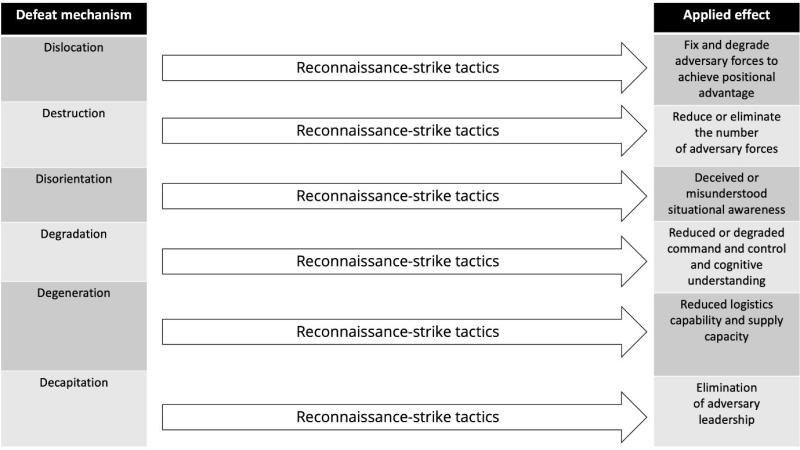
Table 1: Defeat mechanisms and related military effects
Friedman writes that “In the context of the reconnaissance-strike regime, the defeat mechanism provides a way to prioritize targets for reconnaissance-strike tactics depending on the effect the commander seeks to achieve. To seek dislocation, for example, RST can be applied to fix and immobilize enemy forces to render them vulnerable to positional manoeuver, achieving dislocation. One side may use RST to target adversary command and control nodes with precision fires while employing electronic warfare to disrupt manoeuver unit communications to prevent them from immediately reforming connections, achieving degradation.” Therefore, combined defeat mechanisms can be simultaneously (or sequentially) prosecuted by multi-domain effectors within such an approach.
This application of an evolved approach to RST requires an organisational investment in the optimal JTF decision-making structures and resources to maximise success and achieving the desired defeat mechanisms. In this respect, it appears the US and the PLA are on differing trajectories. The PLA has a head start with its established Anti-Access/Area Denial (A2/AD) system, which is a coastal defence design with interior lines of communication capable of recon-strike effects as applied to their claimed maritime operating area.
The PLA experience
China is nationally committed to integrating AI and other emerging technologies into its A2/AD strategy. Its navy and coast guard are using AI to enhance unmanned surface and underwater vessel operations, automate maritime surveillance across disputed waters, and support rapid data fusion in command centres. Beijing’s use of AI to combine satellite and oceanographic data allows it to monitor adversaries and assert maritime claims with greater confidence and persistence. This highlights recent concerns about China’s ability to collect hydrographic information in Australia’s approaches and dominate the decision-making cycle if these areas ever become contested.
The PLA’s concept for how it will organise itself to fight is “systems confrontation warfare” or system-of-systems warfare in Western terminology. The underpinning logic is that warfare in the information age is not an attritional contest between opposing military forces, but rather a clash between opposing operational systems. An enemy can be defeated if its operational system is rendered ineffective or unable to function through the destruction or degradation of key capabilities, weapons, or units that compose the system. Much like manoeuvre warfare theory, the PLA will not seek to just destroy the mass of opposing forces but instead will target core capabilities that integrate a force and enable it to function as a cooperative system (hence systems confrontation warfare). The central idea being that warfare in the information age will be information-centric, making information processing both a strength and a potential vulnerability. The PLA has dedicated joint staff functions around this concept. Rather than organising them by domain or by the traditional NATO staff functions of S-1, S-2, S-3, etc., the PLA has avoided these potential stovepipes and organized JTF staffs around composite Recon-Strike sub-systems. The five component sub-systems of these staffs are:
1) The reconnaissance-intelligence sub-system that collects information, prevents the adversary from collecting information, and provides situational awareness to the entire force.
2) The information confrontation sub-system that employs electronic and cyber capabilities to both collect on and disrupt the adversary’s systems.
3) The command sub-system, which provides command and control and decision support to PLA commanders.
4) The kinetic strike sub-system, which is the units that act on intelligence gained by the other components including long-range precision fires and manoeuvre forces from across the PLA services and domains.
5) The support sub-system, which provides enabling functions like logistics, sustainment, medical support, and maintenance to the whole force element.
This operational staff system will reside at the equivalent of JTF level but is focused on winning the information warfare fight and executing RST. Once stood up, a JTF HQ may have only some of these component systems in combination or all depending on the task. In this staff system, the PLA intends to employ RST against a prioritised set of targets to render an opponent deaf, blind, mute, and eventually paralysed. It promotes fast, accurate and reliable information acquisition, analysis, and dissemination by PLA units. This is in contrast to the US and the ADF staff systems that have separate processes for ISR, targeting, and joint fires run by separate cells in separate staff sections, which are (maybe) fused later. The PLA has designed a fused process for RST in its A2/AD system and then built an integrated staff around it. Lastly, these component staff functions and their systems can be task organised according to mission.
The US Experience
US airborne and amphibious forces, as inherently cross-domain forces but with limited capacity for longer-term sustainment will have constraints on the operational application of RST. However, they are uniquely suited to rapidly securing nodes critical to implementing a focused maritime control effect. Given the ability of adversaries to also exploit RST and achieve degradation against follow-on forces and their logistics, the ability of airborne and amphibious forces to rapidly concentrate and project force across domains makes them extremely valuable in conjunction with defeat mechanisms achieved by air and naval power.
While cyber and electromagnetic warfare are usually broken out in their own domains, the fact is that both ADF and US JTFs will have to use both cyber and electronic warfare to acquire the information necessary for recon-strike tactics, deny them to the opponent, and employ them as strike mechanisms. The current approach of breaking them into their own discrete domains may potentially prevent this necessary integration across all forces and is in contrast to the functional systems approach of the PLA.
US JTF HQ will need to be networked around the targeting process as the primary function, instead of treating it as a bolt-on or ad hoc board as they do now. The fusion of multi-domain ISR data, information-processing, and kinetic and non-kinetic strike systems is too complex, dynamic, and important to continue treating as a desirable afterthought. The U.S. military (and the ADF) will have to organize JTFs that integrate ISR platforms, long-range precision fires and information effects, and the authority to employ them in one entity. These must be inherently organic, not distant enablers or even attachments. The successful induction of AI, autonomous, and human processes into this targeting-centric network will be decisive.
USMC RST doctrine is seeking to develop an information combat element tasked with attacking adversary command and control and kill chains while feeding and protecting those of the Marine Air-Ground Task Force (MAGTF) itself. As the reconnaissance portion of the recon-strike complex becomes as much about signals, electronic, and cyber as physical reconnaissance, the MAGTF needs a subordinate element tasked with (and empowered to fight) the multi-domain reconnaissance / counter-reconnaissance battle. This would enhance the Marine Corps’ ability to employ the degradation defeat mechanism, among others, and protect its own critical information systems.
In capability terms, the US Marine Corps (USMC) has addressed many of the vulnerabilities created by the reconnaissance-strike regime through Force Design 2030. Amphibious warships were more vulnerable to precision fires than they have ever been, necessitating the diversification of amphibious platforms, namely the landing ship medium acquisition. Shedding the logistics intensive M1A2 Abrams tanks and converting traditional artillery units to rocket artillery reduces the Marine Corps dependencies on theatre sustainment, which could well be impossible in the early stages of a Pacific conflict. A renewed focus is placed on distributed operations through longer-range and faster connectors, and a more diverse array of surface platforms that disperse combat power at sea, concentrating only for the final phase of an amphibious raiding operation rather than a massed assault from the sea. This greater focus on smaller amphibious raids over large-scale amphibious assaults can mitigate the vulnerabilities of traditional approaches to amphibious warfare. The USMC is also enhancing its ability to assist the Navy by acquiring strike systems and munitions that can contribute to sea control and denial in a variety of theatres.
The components of a Combined Joint All-domain Command and Control (CJADC2) system may in effect produce the necessary network connectivity to enable RST across the US Joint Force. The USN is seeking its own networked battle management system capable of fusing capabilities through rapid information acquisition, analysis, dissemination, and exploitation for RST. However, the Navy will need to organise task forces far more around the precision guided weapon than the carrier air wing to provide precision strike at relevant longer ranges. The USAAF’s Advanced Battle Management System (ABMS) and the US Army’s equivalent seek to achieve similar sensor-to-shooter fusion. Additionally, the USAAF’s concept of Agile Combat Employment (ACE) is very similar to RAAF’s Agile Basing concept, and may enhance allied efforts to complicate an adversary’s targeting of dispersed air platforms and infrastructure. This has the benefits of slowing down adversary RST while simultaneously retaining allied ability to prosecute coalition strike effects. US bombers, especially the new Northrop Grumman B21 Raider, and Navy ships equipped with large capacity Vertical Launching Systems (VLS) such as the Arleigh Burke class of destroyers, will be primary kinetic components (“missile trucks” in colloquial terms) of the US Joint Force’s total reconnaissance-strike complex.
The US military is adapting to the A2/AD problem set and will need to maintain how it evolves RST as part of meeting this challenge. Currently the PLA appears to be in front, conceptually, structurally and functionally. Although many commentators remain sceptical about the unproven nature of PLA efforts to execute their version of a recon strike complex. However, the same sort of military scepticism was directed at the capability of Japan’s naval, land and aviation forces before the long-range raid on Pearl Harbor in 1941 and subsequent whirlwind advance through SE Asia.
Continued in Part 2 - To be Published 10 September.
